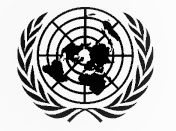Procedures for sample collection, handling, storage, transport, and analysis
A stringent regime should be established to govern the collection, handling, transport, and analysis of samples taken to support the investigation of alleged use of CBT weapons. Where possible, internationally recognized protocols for the collection of environmental and clinical samples should be followed. Experts with the requisite sample collection skills will be able to utilize these protocols readily to collect the various types of samples that could pertain to an investigation, such as:
- neat agent, munitions, remnants of munitions, other military delivery devices;
- NBC clothing and respirator canisters;
- environmental samples;
- food and drinking water;
- biomedical samples from human or animal sources; and,
- any affected crops and other vegetation.
During pre-mission planning consultations with the laboratories likely to analyze environmental samples should be undertaken to establish the appropriate amount to be collected for various kinds of environmental samples.
When the alleged event could be of biological origin, the initiation of the event may have occurred several days or weeks before the Secretary-General is asked to investigate. During pre-mission planning and upon arrival at the investigation site, the Secretary-General’s experts should identify and consider the samples collected earlier by other local, national, and relevant international authorities and organizations. In particular, the team should consider whether to accept the analysis of these samples, to re-test such samples, or to re-take and analyze some or all samples. Moreover, the investigatory team should seek to include such samples and/or the sample analysis in the records of the investigation.
As samples are taken, the investigative team should initiate appropriate chain-of-custody procedures (e.g., documentation, secure storage) and carry them through to the point at which samples are destroyed. The chain of custody form below illustrates the basic process of chain-of-custody. To preserve their integrity, samples should be placed in suitable material and stored and shipped at the appropriate temperature. As needed, the investigation team should pre-screen samples, such as those taken from bomb fragments or devices, for non-biological material (e.g., explosives, radioactive material) prior to shipment.
Field assays may assist with preliminary screening of samples and help ensure the health and safety of the investigators. Where possible, an analysis of samples may be conducted on site. On-site analysis capabilities and standards may be sufficient to enable definitive identification and characterization of chemical samples. However, particularly for biological samples, any analysis conducted in the field should be confirmed according to the process described in paragraph 97 d (ii).


